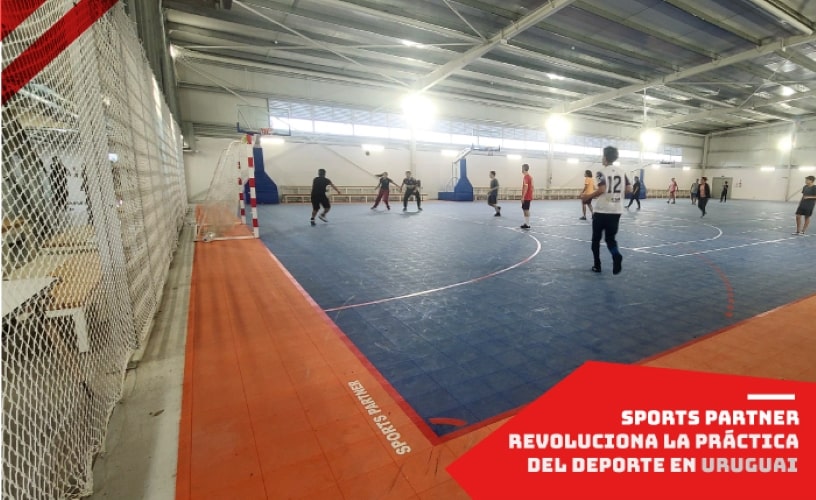
A durable, stable and comfortable surface is necessary for proper sports practice.
“A sports floor must have the primary function of protecting athletes in all aspects of sports practice”
Whatever type of flooring you have, there are several points to bear in mind.
Outdated materials
The flooring used in sports environments, such as pavilions or outdoor sports centres, has evolved substantially in recent years. In the past, many institutions used outdated materials that wore out quickly and had no protection for sports performance.
Today, there are durable, certified and specialised sports floors, designed with the user’s performance, health and safety in mind. Modular flooring in particular is the example that has revolutionised the sports market, made up of small 25×25 polypropylene modules, specially developed for sports that fit together perfectly like a puzzle, recommended/tested for all sports, including roller sports and wheelchairs.
Certified flooring installed by certified companies.
In the past, there was no knowledge/concern about applying certified sports flooring, where serious injuries were constant and consequently the longevity of athletes’ careers was much shorter. In recent times, in order not to make the mistakes of the past, the selection criteria for sports flooring must include flooring that is approved by European standards (EN 14904 indoor flooring/ EN 14877 outdoor flooring) and certified for the practice of various sports. They should also be installed by certified companies with Quality Certification, as this is the only way to guarantee sustained quality.
Poor comfort and no cushioning
Older floors were not designed to provide comfort and protection against injuries. Nowadays there is a concern to maximise the performance of athletes and a stable, comfortable floor is essential to boost their performance.
A floor must offer continuous and uniform cushioning for better shock absorption/energy return, providing comfort and protecting the athlete’s joints. Sports Partner’s modular sports flooring, Naxos (indoor) and Patmos (outdoor), is the only modular polypropylene flooring that offers lateral and vertical airbox cushioning, providing unrivalled levels of comfort.
Low grip
Any sport requires a great deal of physical effort on the part of the athletes, with rapid movements and changes of direction that require confidence in the flooring. A floor with poor grip can lead to falls and the athlete’s chances of injury increase substantially. Sports Partner’s Naxos and Patmos floors have a special microtexture on the surface that provides excellent levels of grip, with a matt, non-glare finish that eliminates light reflections and increases grip levels.
Frequent maintenance
Time-consuming and costly maintenance is something that affects athletes and the profitability of sports venues. Today, modular flooring has no maintenance costs and is quick and easy to clean. In the event of a repair, the modules can be replaced quickly, without jeopardising the profitability of the space.
What’s more, Naxos and Patmos modular flooring comes with an 18-year, no-cost guarantee from manufacturer Sports Partner.
Worn and uneven
A worn and uneven floor jeopardises the playability and safety of athletes. Today’s floors have a long lifespan and low levels of wear. In the case of wooden sports floors, the solution can be refinishing/restoration, which is carried out by an ISO9001 Quality Certified company and guarantees the use of innovative equipment and refinishing/scraping techniques that provide a strategically uniform finish. Nowadays, the application of a specific varnish for wooden sports floors offers more adherence, less reflections and more durability, thus obtaining excellent conditions for sports practice.
Moisture and mould
The longevity of a sports floor is drastically conditioned by the humidity levels in the concrete base and the surrounding indoor air. Too much humidity or trapped moisture contributes to the creation of irregularities, mould and bacterial growth. Today’s modular floors are not susceptible to the creation of bacteria and mould, and are hygienic and easy to clean. The continuous cushioning subfloor between the subfloor and the module acts as an anti-moisture barrier, providing the impermeability that comes from the subfloor while maintaining excellent levels of humidity.

